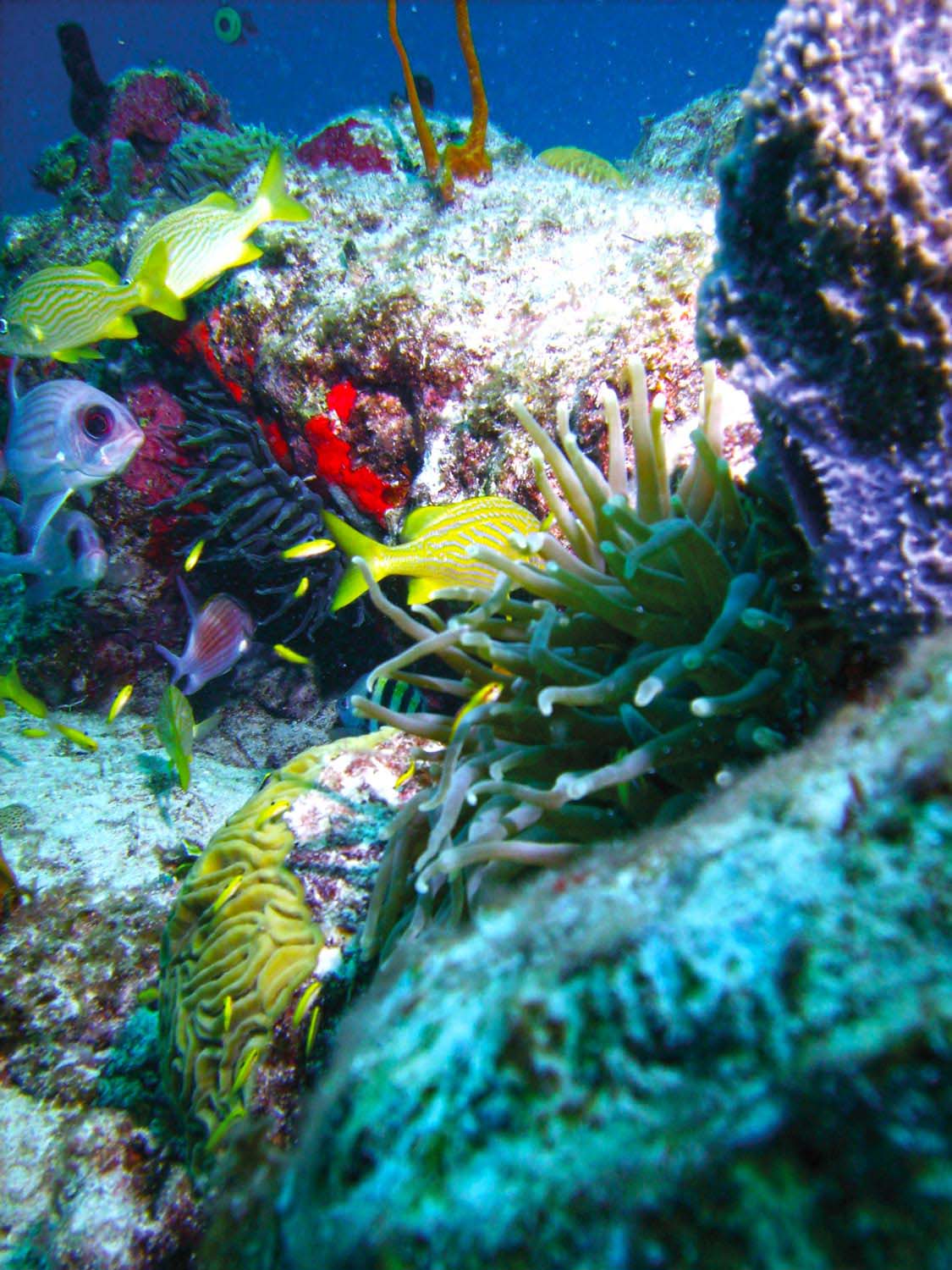There’s buried treasure in St Martin. It may not be numbered amongst the world’s top dive destinations, but its underwater world is rich and remarkable.
St Maarten/St Martin is the 37-square-mile north-eastern Caribbean island that is half Dutch and half French.
You can explore its underwater beauty by drift, night or deep diving; snorkelling; or by going on a scenic tour in a semi-submersible, rather like a submarine.
Tadzio Bervoets of the Ocean Care Foundation explains that the island’s underwater uniqueness lies in the fact that it has an abundance of dive sites, most of which are relatively shallow, making this an exceptionally good spot for beginners.
The underwater cities of St Martin are home to hundreds of spectacular life forms: miles of breathtaking coral gardens, a colourful fish population, turtles and other marine life that leave spectators awestruck.
“Dolphins, seahorses, rays, sharks, and whales can all be encountered,” says Bervoets. “It’s not unusual to spot humpback whales along the island’s shores, during the months of December through April.”
Whales and sharks! Don’t worry—the sharks are friendly and the whales “don’t bother people,” assures Bervoets.
“The types of sharks we have here are primarily Caribbean reef sharks, blacktip reef shark, nurse sharks, and very rarely a bull shark or tiger shark can be seen. Divers are happy to see a shark in the water.
“They come by, have a look at you and continue along their way,” said Bervoets, himself a diver who spends an average of two hours underwater daily.
Several species of wrasses, parrot fish, butterfly fish, puffers, small groupers, snappers, angel fish, starfish and the blue tang are also seen among the flourishing fishy population.
You may also encounter lobsters and squid during an underwater exploration. And, thanks to conservation efforts, there has been an increase in sea-turtle sightings.
There are also underwater sights that stay in one place: the coral gardens. The intricate brain coral, elk horn and staghorn are the most common hard corals, while the gorgonian sea fan is the most predominant soft coral brightening up the sea floor.
To add to the underwater wealth, manmade reef balls have been placed at different locations to promote coral growth.
Marine life is not the only spectacle underwater. A number of sunken barges, boats and bridges—some of them victims of hurricanes over the years—also make interesting wreck dives. An old bridge in Simpson Bay, the south-western part of the Dutch side, for example, was sunk decades ago to form a manmade reef. It’s now home to a healthy fish population and corals, as is the wreck of an English battleship, dating back to 1801, lying in Great Bay just off the coast of Dutch St Maarten.
Although the island boasts about 30 dive sites, on French St Martin most of the snorkelling is done near Isle Pinel—a tiny island on the north end of St Martin—and Creole Rock—a protected reef five minutes off the shores of Grand Case, a quaint community known for its cuisine.
On the Dutch side there are frequent trips to underwater cities in Cay Bay and Little Bay.
A plethora of options are available to experience the underwater world up close and personal. But the only dry tour available is that offered by Atlantis Adventures aboard its vessel Seaworld Explorer.
The vessel does not submerge completely. Passengers descend into its air-conditioned underwater observatory five feet below the surface and sit to look at the underwater “cities” through magnifying glass windows.
The 75-minute tour starts with a brief excursion from the shore at Grand Case to Creole Rock. There, passengers are guided into the vessel’s observatory.
That’s when it gets exciting. A professional diver descends into the water and is immediately surrounded by colourful fish, which he hand-feeds while swimming past the Seaworld Explorer ‘s windows, giving passengers a close view.
An array of Caribbean reef fish, sea turtles, star fishes and beautiful coral gardens can be observed along the journey—and take your breath away. And if you are lucky and keep your eyes peeled (as the brochure advises) you might get a bonus or two, such as a glimpse of the striking moray eel.
As the journey continues, a narrator tells visitors about the island’s ecosystem and the development of its reefs.
Atlantis Adventures also offers semi-submersible tours in countries including Barbados, Grand Cayman, St Thomas, Aruba, Curaçao and Hawaii, and says it’s carried more than 10 million people aboard. On St Maarten/St Martin, Seaworld Explorer makes an average of 20 trips underwater every month.
Visitors to St Martin can book underwater tours through their hotel’s activities desk or check out: www.atlantisadventures.com




















